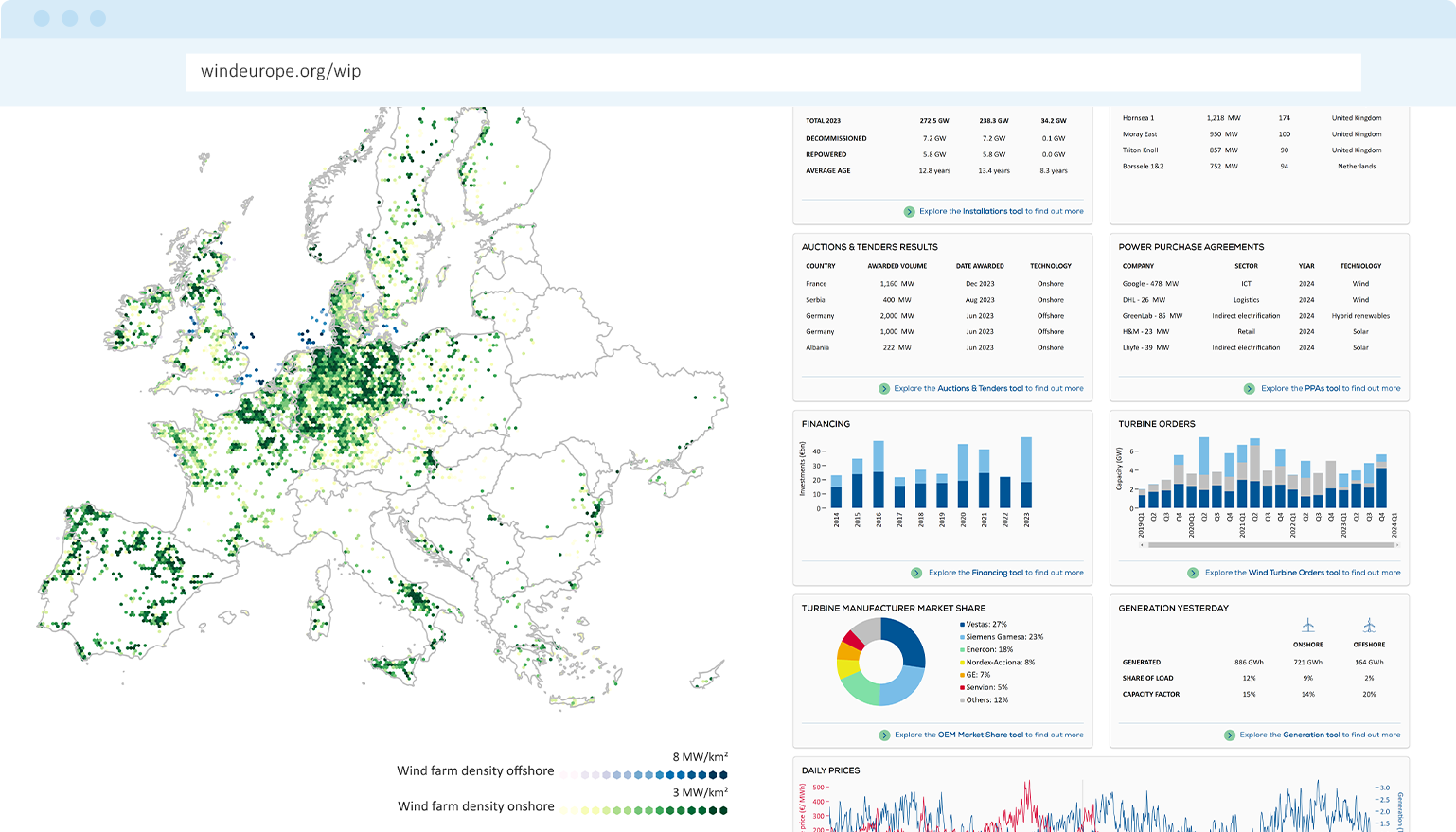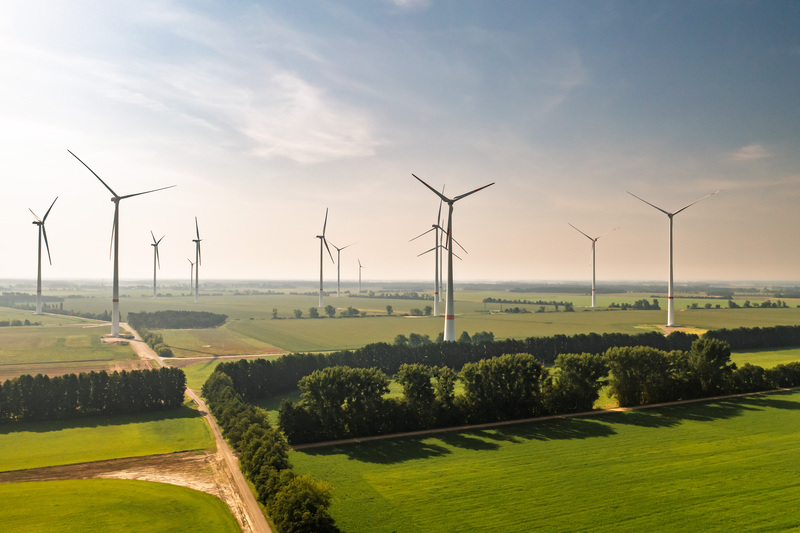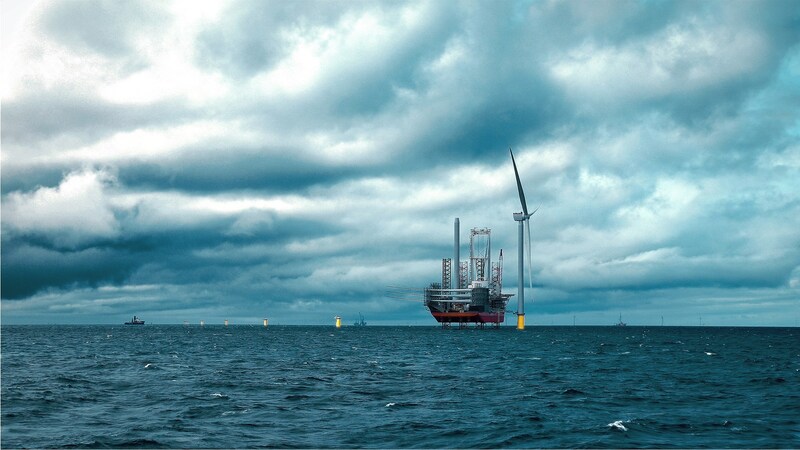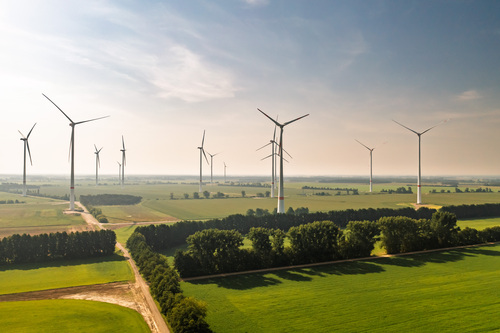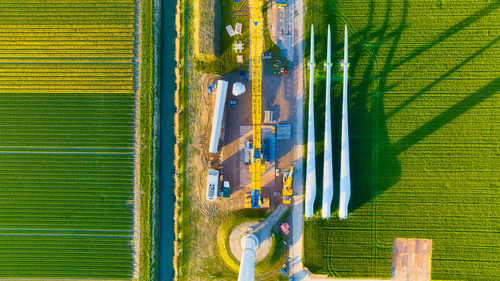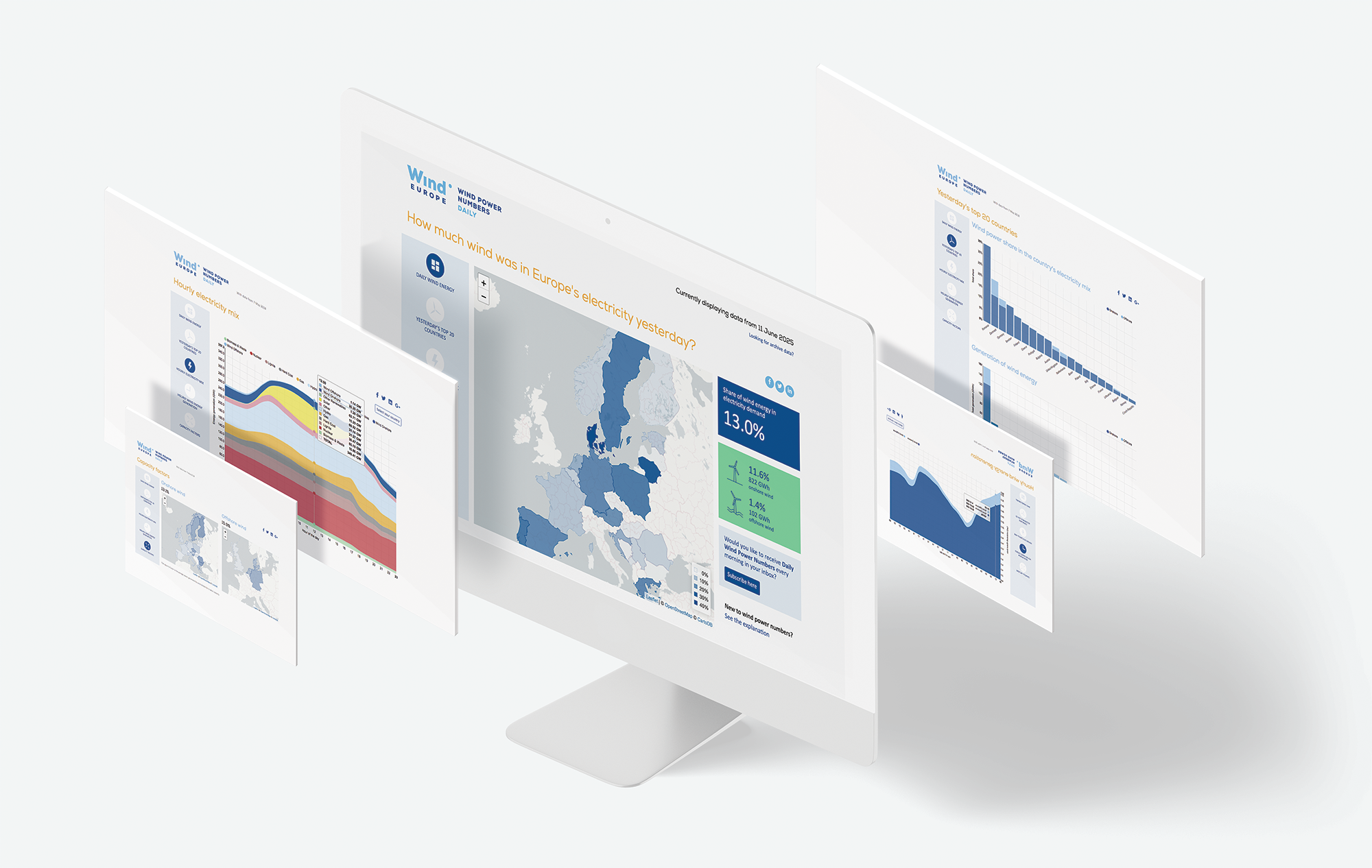Introducing the WindEurope Intelligence Platform
This is your go-to resource for wind energy data - from across Europe going back nearly 10 years. Whether it's a detailed report, a webinar recording, or the latest wind energy stats and installations - find what you're looking for with a few simple clicks.
Featured products
Latest products
No products match your selected filters. Try selecting different topics.
Want to know how much wind was in Europe's electricity yesterday?
Subscribe to our newsletter
Stay up to date with our activities (events, news, policy and more).

